Dose of cheerfulness for the "universal soldier"
In the old days, recruits to the army were "shaved" selectively, but for a long time. At different times in different countries, the service life of soldiers ranged from 10 to 25 years. They took, as a rule, young and strong village boys who had passed through a sieve of terrible natural selection: many children were born in peasant families, but far from all survived, but the survivors were “healthy by nature”. Once in military service after heavy peasant labor and far from abundant nutrition, they received a daily ration of meat and regularly exercising, developing strength, endurance and dexterity, in the hands of skilled and often cruel instructors, in three or four years, recruits became real professional soldiers, habitual to hikes.
With the introduction of universal military service, the service life was significantly reduced, and they began to take on everyone. Most of the life span was spent on turning a recruit into a soldier, and as soon as it was done, it was time to retire. In fact, the army began to consist of recruits, much worse than the soldiers of former times, prepared for the service. But the loads were constantly growing, and the experience of the Franco-Prussian war showed that without an additional "reinforcer of forces" soldiers could simply not endure excessive overloads during the blitzkrieg marches.
In Germany, to increase the stamina of the soldiers, they changed their feeding system during the march. The fruit of the creative efforts of army nutritionists was a product called pea sausage, made from pea flour, with the addition of lard and meat juice. This high-calorie, but heavy food did not strengthen the forces, but burdened the soldiers: they felt full, but the forces did not increase. Worse, many stomachs could not tolerate this food, and the soldiers began to “belly-wash”, which did not add to the speed and vigor of the columns on the march. The problem remained unresolved.
They tried to “cheer up” their soldiers and French generals. Observing the methods of warfare by the native armies in Africa, the French officers drew attention to the amazing endurance of the natives and discovered a lot of surprising things for themselves. The wars were mainly aimed at capturing slaves for sale to Arab merchants. The military expeditions of the native kings set off on an expedition lightly and climbed deep into the jungle. The booty — slaves or slaves bought from forest leaders — drove many hundreds of kilometers into the possession of the king who sent them. At the same time, neither the black slave owners, nor the slaves captured by them had any carts with supplies. In the rainforest it is simply impossible to carry such supplies with you. There was no question of any hunt: the caravans were going in a hurry, from source to source, without stopping anywhere, fearing the attack of a changed-over leader or riot. Slaves and convoy sometimes waved 80 km per day in the most difficult conditions of the tropical forest!
The delivered “goods” were sold to Arab merchants, and they took their caravans even further: to Zanzibar and other starting points of the “overseas slave trade” located on the ocean coast. At all stages of the slave journey, the captives demonstrated amazing endurance, passing virtually the entire continent on foot in a short time. But, overbought by the Portuguese, they seemed to “break” - there was no trace of stamina, and, without suffering deprivation, they died in large quantities.
French officers believed that the secret of this African endurance lies in the diet: the basis of the ration of the convoy and slaves were the fresh fruits of the cola nut. According to the Africans, they quenched their hunger, aroused all their powers and abilities in a person and protected against most diseases. These nuts were valued more than gold, in fact being its counterpart in the calculations between the tribes and in domestic trade. In many African countries, the stake served as a symbol of peace, a special sacred sign, offered by the parties at the start of negotiations.
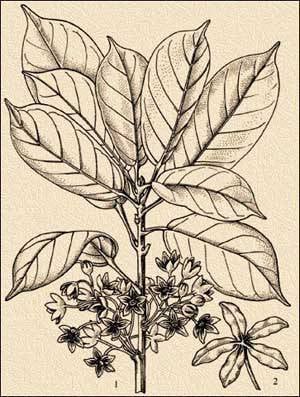
Pointed cola: 1 - flowering branch, 2 - fruit.
For a long time in Europe, talking about the wonderful properties of the kola nut was considered a colonial fairy tale. The properties of the miracle nut were studied only after the report to the authorities of the lieutenant colonel of the French army. Drinking only Kola's nut, pounded into powder, while climbing Mount Kang, it rose continuously, for 12 hours, without experiencing fatigue.
Botanists call this plant Cola acuminata. This plant belongs to the Staculia family. This is a beautiful evergreen tree, reaching a height of 20 m, looks like a chestnut. It has drooping branches, broad, oblong, leathery leaves; its flowers are yellow, star-shaped fruits. The tree begins to bear fruit on 10-th year of life and gives a year up to 40 a kg of nuts, very large, up to 5 cm long. As stated by the first Cola researcher Professor Germain Se, the nuts were "a pound each."
Homeland C.acuminata - the west coast of Africa - from Senegal to Congo. Particularly favorable conditions for this tree in Dahomey, in what is now Benin. The plant adapts easily to other conditions, growing in the Seychelles, Ceylon, India, Zanzibar, Australia and the Antilles.
Professor Se, who studied the composition of the nut kernel, found that it contains 2,5% caffeine and a rare combination of vitamins and other stimulating chemicals. A group of scientists in the strictest confidence, under the control of the military, isolated an extract of substances from the pulp of cola. In 1884, the product “crackers with an accelerator” they created was presented to the Paris Medical Academy. Tests on its effects on the human body were conducted in the summer of 1885 in the Algerian desert.
The soldiers of the 23 th Jäger battalion, having received only “cola crackers” and water as food, came out of the fort. They walked at a speed of 5,5 km / h, without changing pace during the 10 hours in a row in the hellish July heat. After passing 55 km in one day, none of the soldiers felt exhausted, and after a night’s halt they made a return march to the fort without any difficulty.
The experiment was repeated in France, now with the officers of the 123 Infantry Regiment. The unit, equipped instead of the usual marching ration only with cola nuts, passed lightly from Laval to Reni, and everyone was so vigorous that they were ready to immediately go on their way back.
It seemed a remedy found But the question arose: how long can a person live, eating in this way? According to Se, the nut didn’t replace the man with edible supplies, but only by intoxicatingly acting on the nervous system, he dulled the feeling of hunger, fatigue and thirst, forcing the body to use its own resources. Other scientists believed that body functions are stimulated by a unique combination of natural elements concentrated in the walnut kernel.
Nevertheless, the “pure product” was not allowed into the food ration of military personnel, since the miraculous drug had a very serious side effect. The accelerator not only strengthened muscles, relieved from fatigue and shortness of breath, but also acted as a powerful sexual stimulant. It was feared that during the war, troops “under the cola” could turn into armed gangs of rapists and marauders. Therefore, it was decided to use cola extract as a diet enhancer only in special cases. The bitter taste of cola was perfectly combined with chocolate, and this “chocolate-cola” became the staple food of the ground forces (with long transitions), sailors, and later pilots and paratroopers.
* * *
The main doping in all the armies of the world was vodka. Before the battle, soldiers were given a special vodka ration to raise morale, but mostly it helped prevent painful shock when wounded. Vodka also relieved stress after the battle.
During World War I, hard drugs — cocaine and heroin — were the main means of pain relief for injuries and for relieving stress. The military morphine became commonplace. In Russia, a stunning "trench cocktail" was created: a mixture of alcohol and cocaine. During the Civil War, this "radical mix" was used on both sides of the front line - both white and red. After that, they did not sleep for days, they went on the attack without fear, and when they were injured they did not feel pain. This state was supposed to help the soldiers in terrible wartime. But some did not have time to get out of it, others could not, others did not want to.
The attempt to replace conventional products with a kind of compact stimulator at the end of 20-x - the beginning of 30-s ended sadly. last century during the armed conflict between Bolivia and Paraguay because of the oil-bearing territories. Having received a generous loan, the Bolivians stocked up on weapons and hired former German officers, led by General von Kund, to command the army. The backbone of the officer corps of the army of Paraguay consisted of about a hundred Russian immigrant officers, and the general headquarters was headed by General Artillery Belyaev.
Despite the considerable superiority of the Bolivian army in armaments, the Paraguayans managed to surround their large group in the jungle, cutting it off from sources of water and supplies. The Bolivian command tried to deliver water and food by air, dropping ice and bags of coca leaves from planes. Coca leaf gum drove fatigue, after it did not want to eat, but the forces were getting more than enough.
Bolivian soldiers, mostly Indians in the mountains, did not tolerate the hot, humid climate, many had malaria, and they fell on their beloved Coke, thinking to solve all the problems at once. Once the coca leaves that had been harvested, the besieged people saw that Paraguayans were walking on them to the full-length drumbeat like a parade. Those besieged in them shot-shot, but they did not fall and everyone went and walked. This is the Russian captain who served during the Civil War in the officer regiment of the Kappel division, raised his battalion to the "psychic attack".
A similar way of attack "Kappelevtsy" used to mentally break down the enemy. Chapaev’s fallen-in-arms fighters couldn’t withstand such a blow, and there’s nothing to say about Bolivians who are under the dope of coca. Throwing defense, thinking nothing and shouting that evil spirits chasing them, they ran into the jungle ... directly to the machine gun crews of the Paraguayans.
The sad experience of using stimulants did not put an end to this topic. In a scientific approach to business, military physicians hoped to realize the most valuable and effective developments in which the positive effect would be enhanced, and the negative consequences would be weakened.
By the beginning of World War II, intensified research in this area was conducted in almost all countries preparing for military action. In the Third Reich, stimulants were developed for special units. Thus, the operators of guided torpedoes were given D-9 tablets, which were supposed to "push the limits of fatigue, increase concentration and critical abilities, strengthen the subjective sensation of muscle cheerfulness, weaken urination and intestinal activity." The tablet contained equal doses of pervitin, cocaine, and eucodal. But the expected effect did not work: the subjects experienced short-term euphoria with hand trembling, depression of the central nervous system, reflexes and mental activity weakened, sweating intensified, and, according to saboteurs, they experienced something like a hangover syndrome.
But excellent results were recorded when in the same detachment they gave special chocolate with cola nut extract. The best “supporter” before going on a mission, according to German doctors, was a good restful sleep for at least 10 hours.
Things were much better with the Japanese. Apparently, the fact that drugs in the East have long been a part of everyday life and traditions has affected. Systematic studies of the effects of narcotic drugs on the human body were begun at the end of the 19th century. The fruit of many years of effort was synthesized in the 1930s. in the military medical laboratories of Japan, the chiropone stimulant (in the European pronunciation of "philopon"), which began to be used in the army in the form of injections and tablets.
At a certain dosage, chiropon perfectly encouraged soldiers during tedious foot crossings, removed the feeling of fear and uncertainty, sharpened their eyesight, for which they were called “cat eyes” in the imperial army. At first, it was injected by the sentinel, who stepped into the night shift, then they began to give night shifts to employees of defense enterprises. When malnutrition and deprivation of many years of war began to affect workers, chiropon began to be given to day shift workers. So the effect of this drug experienced almost the entire adult population of Japan.
After the war, control over the distribution of the drug by the authorities was lost: the Japanese police and gendarmerie were actually disbanded, and at first the Americans didn’t care before the “natives” spend their leisure time. Numerous laboratories continued to produce chyropon, and an unprecedented wave of drug addiction swept Japan: more than 2 million Japanese constantly consumed this drug.
The occupation authorities panicked when their soldiers began to adopt local habits. Communicating primarily with prostitutes, who in the hungry, overcrowded by the unemployed post-war Japan had an incredible amount, the American GIs got a taste of chiropone, which local beauties used to all the polls. The shot cost fantastically cheap — ten yen, which was about six cents! However, despite the apparent cheapness of one dose, this habit was quite expensive: soon there was a dependence on the drug, and the need for it quickly increased to several dozen injections per day (!). In order to get money for injections, drug addicts went to any crime. The drug addict “chiroponchik” became aggressive and dangerous for those around him - for this he was pushed by the peculiarities of the drug, originally intended for “encouraging” soldiers.
In 1951, the Japanese government banned the production of chiropon, but it continued in clandestine laboratories. Starting with chiropon, the gangsters tried to create a network of production and trafficking in heroin. During the preparation of the Tokyo Olympiad 1964, all the forces of the police and special services were thrown into the fight against drugs. The bosses of the drug business were in prison, and all the laboratories that produced drugs on the islands were destroyed. And to this day, the laws against drugs in Japan are the most stringent: any foreigner, noticed even in a one-time use of dope, will never receive permission to enter the country.
Current developments in the field of neurostimulators are classified, but they are undoubtedly underway. Their side effects are “dope scandals” that regularly shake the world of professional sports. "Sport of great achievements" has long been a proving ground for testing tools and methods developed for the training of special forces and personnel of all armies in the world. The tasks are the same: reducing the threshold of pain sensitivity, suppressing fear, strengthening physical strength and stabilizing mental reactions to external stimuli. Stimulants make young healthy people with disabilities unable to withstand overloads: the joints are damaged, the ligaments, muscles are torn, and the kidneys, liver and heart are not sustained. Very often, veterans of sport, like those of soldiers and officers who have gone through modern wars, lose their mind.
If we take a thorough approach to the issue of increasing the combat capability of the army, then, oddly enough, the prospect is seen more and more clearly ... a return to the former system of its recruitment, to the revival of the class of professional warriors. After all, knighthood in Europe, the Kshatriya caste in India, samurai in Japan are, in essence, intuitive practices in the field of selection. Modern genetics has already proved the existence of a gene of increased aggressiveness, which is included in the set of genes of the “ideal soldier”. Carriers of this gene are indispensable in crisis situations: during war, cataclysms, chord works. There they are relevant, useful and happy from the realization that they have found themselves in this life. They are a routine of life, constantly looking for adventure. Excellent stuntmen, sportsmen of extreme sports and ... criminals come out of them. N.V. also wrote about the collision of interests of a peaceful society with the needs of “artificial self-satisfaction” of the latent needs of the psyche embodied in these potential warriors. Gogol, having described one of his characters: “... he would be in the army, but in the war, in order to sneak up on the enemy’s battery at night and steal a cannon ... But there was no war for him and therefore he stole in the service ...”
In the old time, he discovered such inclinations from childhood and took them to a knight or prince, and his whole life went on in a certain way: war, feasts, booty, dangers. This gave the "natural warrior" constantly strong emotions, a regular concentrated release of aggression, motivated by a high goal of wasting physical strength and mental energy.
In Russia, such warrior-heroes enjoyed great respect as defenders of "from the evil enemy." The brightest example of such a biography is the Russian bogatyr Ilya Muromets, a real-life warrior, sung in epics.
In the light of these arguments, an idea arises: as early as childhood, using genetic analysis, to identify people who are predisposed to a military career, thus reviving the military estate, returning its armies to its heroes. For such soldiers by nature, no "boosters" will be required. It will not be a return to the past at all, but if you will, a step forward - into the future enriched with accumulated knowledge.
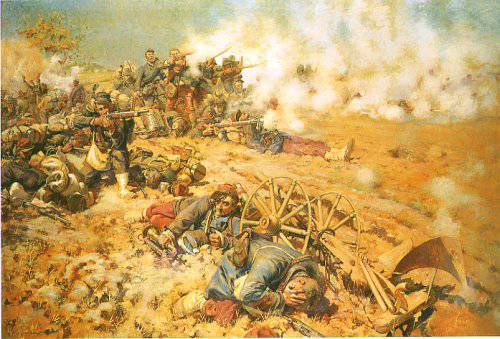
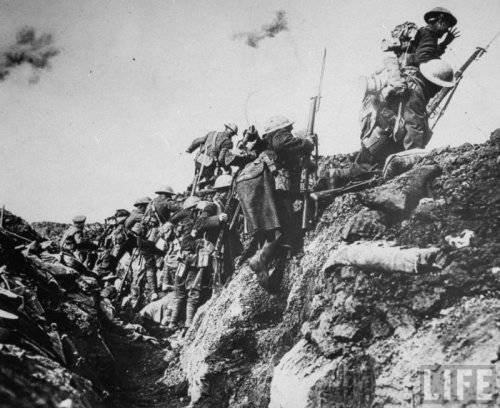
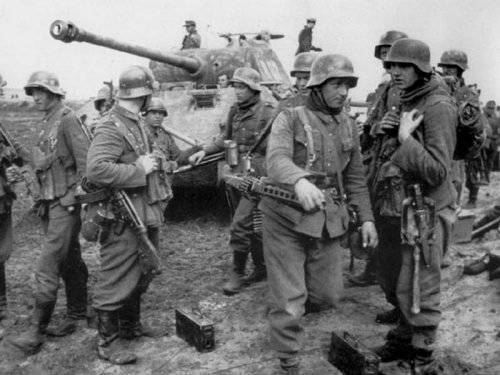
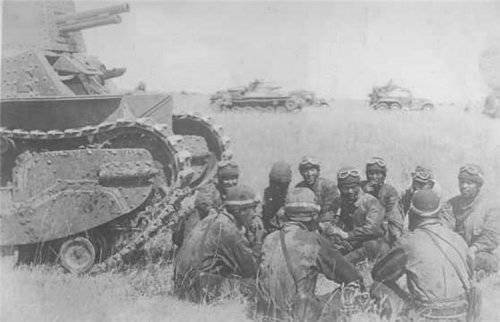
Information